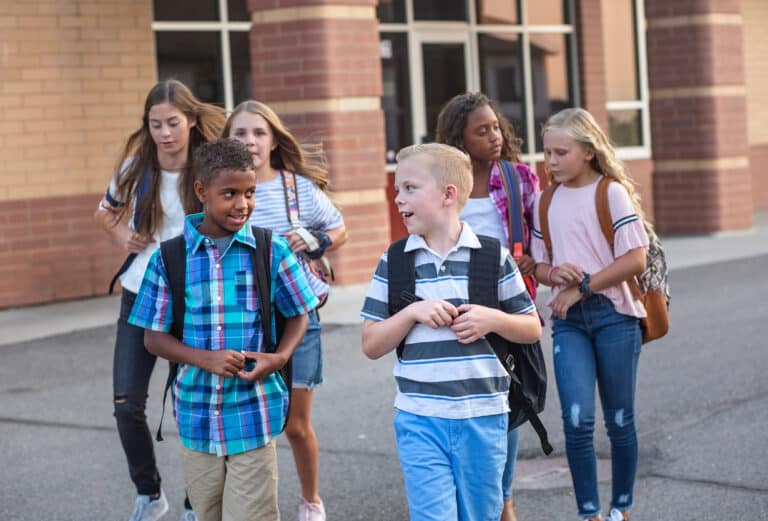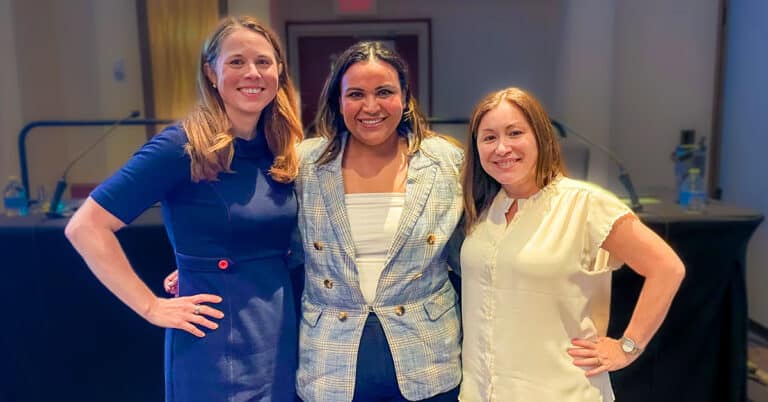Sixth-grade teacher Emily Harrison’s focus this school year was on student feedback, and she’s implemented a system for students to help each other learn and progress.
As a teacher in West Fargo School District, one of four districts partnered with KnowledgeWorks to advance personalized, competency-based learning in North Dakota, empowering learners to take ownership of the learning process is critical for Harrison and her fellow teachers.
“I wanted to shift the focus away from just teacher feedback and to my students so they can learn from each other,” Harrison said.
She set up a “student feedback table” in her room and assigns a “feedback facilitator” to sit at the table and offer constructive feedback to their peers. At first, students often used sentence starters to guide how they could ask and give helpful critiques.
“They no longer need those because they now have that language and those communication skills,” she said.
Schuldheisz is also incorporating strategies to help develop student ownership in the math classroom. Find out how.
Learn more>
Harrison said implementing the feedback table was an important first step for her and her students. She then tried using choice boards. That allowed her to introduce some elements of personalized learning and flexible pacing to see how it could work.
“I found it to be a lot more manageable when you start to let go of pace and let students guide it,” Harrison said.
Harrison’s colleague Marissa Schuldheisz said though the structure took a lot of work on the front end, it quickly got easier. “I wasn’t sure if it was sustainable, but once I saw how it worked, I knew I had to keep doing it.”
Harrison agreed. She’s also relied on her mentors and said that the period of distance learning during the COVID-19 pandemic actually helped her be more open to trying new tools and techniques.
Before this year, Harrison said it was easy to get caught up in thinking about herself, how she was teaching her content and how she was leading classes.
“But when students are your main player, you become more of that coach,” Harrison said, adding that she feels more like the facilitator of learning, rather than someone simply delivering information. “It’s just more fun and it’s empowering for the kids to understand their learning in a deeper way. I’ll never go back.”
Harrison also has her students reflect on their learning at the end of each class. On the way out, they simply rate their proficiency on the learning target they focused on, write it on a sticky note and post it on her door.
First-year math teacher Schuldheisz has had her students engage in reflection and both Harrison and Schuldheisz have seen an improvement in their student’s engagement and grades since implementing personalized learning and reflection tools.
“It has almost completely eliminated behaviors,” Schuldheisz said. “And it’s given me consistency and data to see how my students are progressing.”
Still, both teachers said they were anxious at the beginning of making the transition to personalized, competency-based learning. But once they developed a structure for their teaching and once students learned the expectations, each unit has gotten easier.
Guest post by Mara Klecker, a journalist in Minneapolis, Minnesota. Klecker is the daughter of two educators and has always called the Midwest home.
Interested in a supportive space for educators to share ideas, tools and strategies for creating personalized, learner-centered experiences that help each student take ownership of their learning? Well, we’ve created one.





